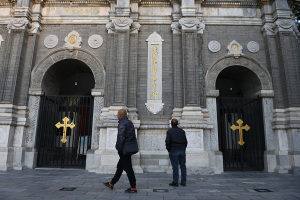5 Landmark Supreme Court Decisions That Didn't Resolve Anything
3. Plessy v. Ferguson, 1895

Following the end of Reconstruction, the South went about implementing policies of racial separation in its institutions and public facilities.
This included Louisiana's public transportation system, which in 1890 adopted a Jim Crow law for its train passengers. In 1892 Homer Plessy was arrested for violating the law.
"He was brought before Judge John H. Ferguson of the Criminal Court for New Orleans, who upheld the state law. The law was challenged in the Supreme Court on grounds that it conflicted with the 13th and 14th Amendments," noted history.com.
In a 7-1 vote, the Supreme Court upheld Jim Crow, establishing the "separate but equal" defense for racial segregation.
The decision, however, did not halt the ongoing debate and resistance to racial segregation as civil rights groups throughout the 20th century protested Jim Crow public transportation through boycotts and legal action.
In 1954, the Supreme Court overturned the reasoning undergirding Plessy through the decision Brown v. Board of Education. Combined with other measures, "de jure segregation" ceased to exist.
4. Brown v. Board of Education, 1954

Often credited with striking down the very segregation argument upheld in Plessy and widely celebrated as a major civil rights victory, Brown was a win for racial equality.
In 1954, the court ruled unanimously that the Topeka, Kansas, school board could not deny a black student admission to an all-white school. The decision was applied nationally to include all school systems, including those in the Old South.
"The decision held that racial segregation of children in public schools violated the Equal Protection Clause of the 14th Amendment," noted PBS.
"Where a state, therefore, has undertaken to provide universal education, such education becomes a right that must be afforded equally to both blacks and whites."
The broadly applied ruling, however, met intense backlash, especially in the South via a movement commonly referred to as "Massive Resistance."
Southern governments and school boards refused to integrate, prompting the Supreme Court to issue Brown II the following year demanding that integration come at "all deliberate speed."
For many parts of the nation, years went by before desegregation was finally implemented in public schools.
Furthermore, even as legal or "de jure" segregation is no more, "de facto" segregation remains strong in much of the country.
Groups like the Economic Policy Institute have noted that "resegregation" of schools and neighborhoods has become a major problem in the modern day.
"Racial isolation of African-American children in separate schools located in separate
neighborhoods has become a permanent feature of our landscape," argued EPI in a 2013 paper.
"Today, African-American students are more isolated than they were 40 years ago, while most education policymakers and reformers have abandoned integration as a cause."
5. Roe v. Wade, 1973

In 1973 the Supreme Court, led by Chief Justice Harry A. Blackmun, ruled 7-2 that abortion was a constitutional right.
While allowing for states to restrict abortions in some circumstances, the decision nonetheless struck down numerous laws across the country regarding abortion regulation.
"We, therefore, conclude that the right of personal privacy includes the abortion decision, but that this right is not unqualified, and must be considered against important state interests in regulation," ruled the high court.
Ironically, on the eve of the ruling, there had been an increased effort to legalize abortion through state-level legislative means.
More than 40 years after the decision the debate over abortion continues to abound at both the state and federal level.
Some have estimated that since 1973 hundreds of new regulations on abortion providers have been passed and in recent years the number of abortion clinics has declined rapidly.
Every year on the anniversary of the decision, tens if not hundreds of thousands of pro-life activists rally at the National Mall demanding its nullification.
Harvard Law School professor Michael Klarman, an expert in constitutional history and law, recently commented about the backlash.
"The justices who decided Roe almost certainly did not expect the kind of political backlash that materialized in its wake," wrote Klarman.
"They thought they were pushing the country further in the direction it was inexorably moving in, which was progressive reform of abortion statutes."
Whether or not the pending decision by the Supreme Court regarding the legality of state-level gay marriage bans creates its own great backlash remains to be seen.




























